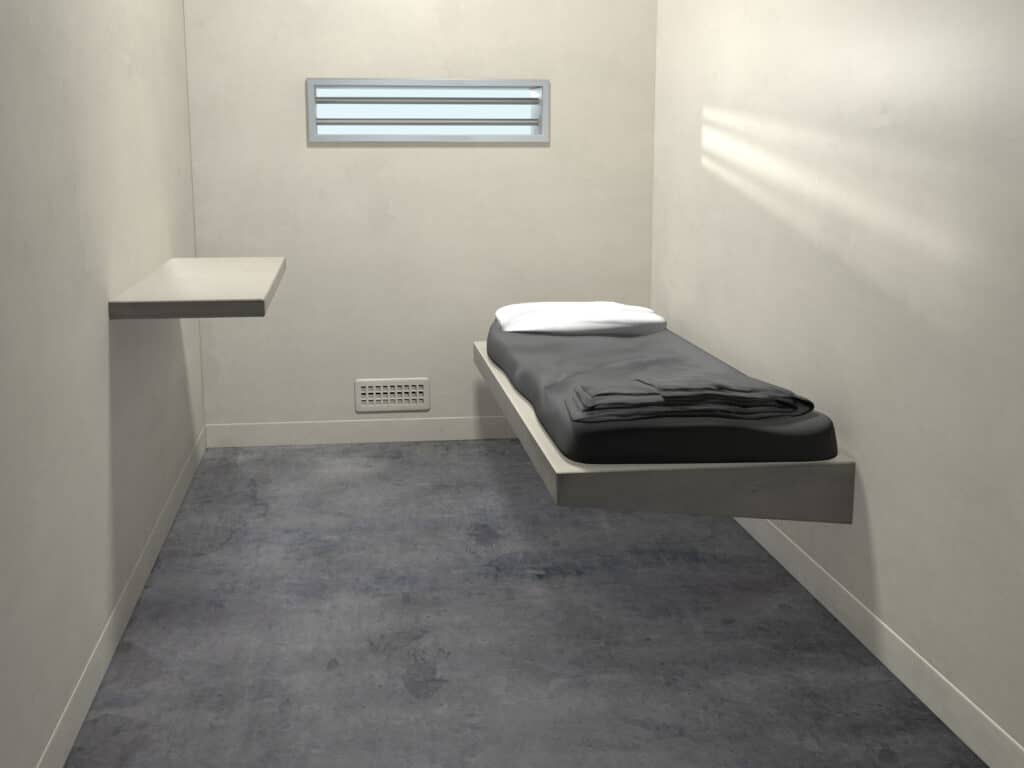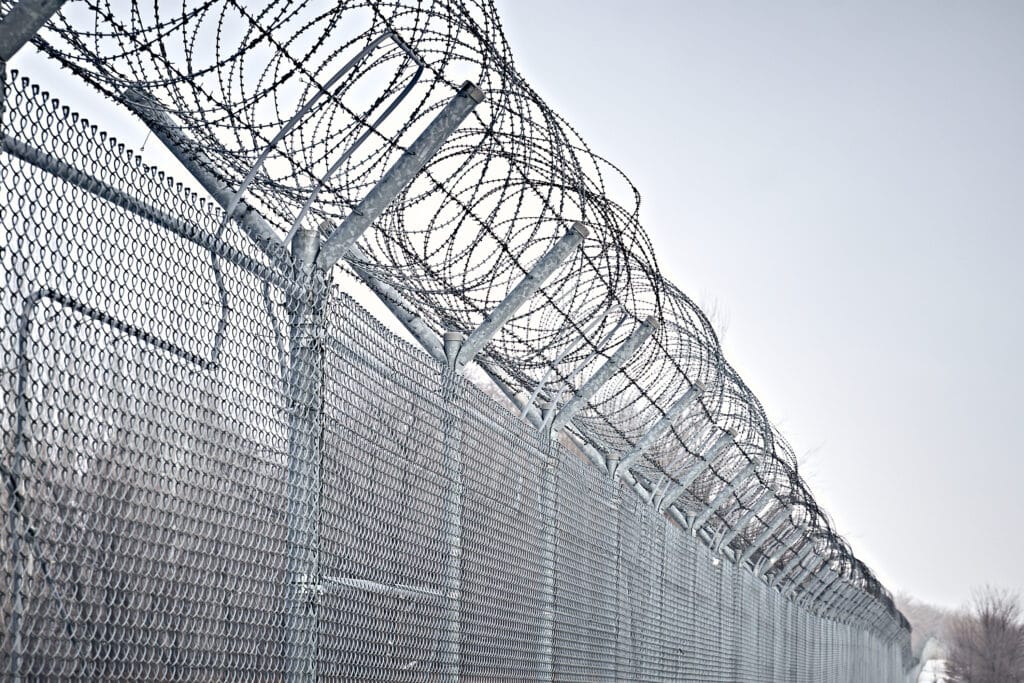Protective custody within prison systems is pivotal for safeguarding inmates at risk of harm. This article delves into the intricacies of protective custody (PC) in federal prisons. We explore its purpose, the processes involved, and the conditions under which inmates might be placed in PC, thus ensuring a comprehensive understanding of this essential component of the Federal Bureau of Prisons.
Table of contents
- Understanding Protective Custody in Prison
- What is PC in Prison?
- Common Reasons for Seeking Prison Protective Custody
- How to Request Protective Custody Placement
- SIS Threat Validation Investigation
- PC Prison: The Environment and Conditions
- Your Protective Custody Experts
- Protective Custody Frequently Asked Questions (FAQs)

Understanding Protective Custody in Prison
Protective Custody (PC) is a measure taken by prison authorities to shield inmates from potential threats, including harm from other prisoners. This protective measure is available within federal prisons and serves to maintain the safety and order of the institution while, in theory, upholding the individual rights of inmates.
Inmates in protective custody are known to spend months on end in the Special Housing Unit (SHU). Even if the staff verifies their need for protection, they might be kept in the SHU indefinitely rather than transferred. The extended stay is used as a deterrent to having prisoners “check in” for protection.
What is PC in Prison?
PC in prison refers to the segregation of certain prisoners from the general population for their safety. Protective custody placement is either initiated by inmates or staff for various reasons.
Federal Bureau of Prisons’ policy explains inmates may be placed in “administrative detention status as a protection case” in the following circumstances:
- Victim of Inmate Assault or Threats
- Inmate Informant
- Inmate Refusal to Enter the General Population
- Staff Concern
While federal prison policy and federal regulations contemplate these four categories of protection cases, the reality is that inmates may seek protective custody placement for any reason. Likewise, inmates aren’t necessarily required to identify a specific reason.
Common Reasons for Seeking Prison Protective Custody
As a practical note, many federal prisoners who enter protective custody do so because of either inmate assault or threats from other prisoners. In some cases, inmates arrive at a new prison, know of its dangerous reputation, and refuse to enter the general population out of fear.
Inmates convicted of sexual offenses and those who are known informants are more likely than others to enter PC due to fears for their safety. Likewise, at some rougher institutions, LGBT inmates elect to enter protective custody instead of the general population.
Some inmates think if they check-in, they will be transferred to another prison. This rarely happens quickly. The truth is that most inmates who check in are eventually released back into the same compound. If they are transferred, they often remain in the SHU for up to a year, awaiting transfer review proceedings.
How to Request Protective Custody Placement
There is no specific process for requesting PC placement. Typically, inmates approach any staff member and ask for protective custody. If this request is made to a front-line prison guard, the guard typically radios the activities lieutenant and sends the inmate to the lieutenant’s office for further discussion.
Once at the lieutenant’s office, inmates typically further flesh out the reason for their request. While staff always ask for specific threats or the otherwise rationale for protective custody placement, inmates aren’t required to debrief fully.
While some prison staff may try to dissuade inmates from seeking protective custody, if the prisoner remains adamant, staff are required to place them in protective custody. At this point, staff escorts the inmate to the Special Housing Unit (SHU), where they remain pending a further SIS investigation.
If an inmate decides that they no longer need to be in protective custody, they can request a hearing to discuss and possibly terminate their protective custody status.
SIS Threat Validation Investigation
Upon placement in solitary confinement for protection, the SIS Department commences a threat validation investigation. This investigation typically involves an SIS technician speaking with the inmate about their perceived need for protection.
When the result of inmate assault or threats, the SIS agent will demand disclosure of the identities of the offending parties. While the inmate can disclose identities, this is fraught with risk. Depending on the outcome of the threat validation investigation, the inmate may be permitted to remain in the SHU (until transfer to another facility), or staff may speak with the offending inmates, determine the threat is not validated, and then try to convince the inmate to return to the general population. If the latter, other inmates will likely become aware of the inmate’s informing, causing additional in-prison issues.
The SIS Department concludes its investigation by determining whether the threat is validated. If validated, the inmate remains in PC in the SHU until their transfer to another federal prison. If not validated, the inmate is issued a direct order to reenter the general population, and if they refuse, they are issued numerous disciplinary reports for refusing a direct order.
Special Note About SIS Investigations
Staff will sometimes pump inmates for information when they check-in. If inmates go to the SHU for protective custody, they should expect this and not turn over. If an inmate does “debrief” or provide information, whether or not they are transferred, they could earn a reputation as a snitch. This is a “bad jacket” that can follow them to any other facility for the rest of their incarceration.
Some inmate informants check in to the SHU for protection and think they can claim they are there for disciplinary reasons. This subterfuge often does not work because other inmates insist on seeing their Discipline Hearing Officer (DHO) report. Only a DHO can place an inmate in the SHU for disciplinary reasons, so anyone in the SHU for disciplinary reasons will have a DHO report.
The only exceptions are prisoners awaiting their DHO hearings. But if a hearing is pending, they would still be issued an administrative detention order (ADO), proof of the reason for SHU confinement, and they can show that to other inmates.

PC Prison: The Environment and Conditions
Inmates at risk of assault, who have been assaulted, or fear for their safety can be placed in the Special Housing Unit (SHU) on administrative detention status for protective custody. However, prisoners in the PC prison environment live in the same conditions as those on administrative detention status and disciplinary segregation status.
The Federal Bureau of Prison’s way of protecting those who need or think they need protection is to lock them in a cell for days, months, or years. If inmates consider “checking in” for protection, they should first try to resolve the underlying problem.
Protective custody can be just as dangerous as the general population. In the SHU, those on administrative detention and disciplinary segregation are often housed together. The federal prison system is notoriously lax about keeping inmates who should be separated apart.
Living in the SHU is difficult and dangerous in itself. Some would say it’s better to live in the general population with some fear or the occasional need to fight than to have themselves locked in a SHU cell for 23- to 24 hours a day. It’s a serious decision. Of course, if an inmate reasonably believes they’re going to be killed or badly injured, the SHU could be a viable option.
Your Protective Custody Experts
Protective custody is a significant aspect of the federal prison system, designed to protect individuals vulnerable to threats within the prison environment. Whether referred to as Prison PC or protective custody, the safety mechanism carries substantial weight in maintaining the health and safety of inmates.
It is the responsibility of federal prisons to implement PC judiciously while balancing security and the humane treatment of those in their care. As such, understanding the nuances of PC is crucial for inmates, legal professionals, and the public to recognize the protective layers embedded within the justice system.
The efficacy of protective custody depends on the ongoing assessment and evolution of its practices. It requires continuous dialogue between prison officials, inmates, legal advocates, and policymakers to ensure that the system functions to protect without unnecessarily punishing. It is a nuanced dance between the rights of the individual and the safety of the collective within the unique ecosystem of the federal prison environment.
Protective Custody Frequently Asked Questions (FAQs)
PC in prison stands for Protective Custody, a safety measure for inmates at risk of harm from other prisoners. Protective Custody is available in federal prisons, state prisons, local county jails, and other correctional facilities.
Protective custody is a type of inmate housing designed to protect an inmate from potential danger from other inmates, often involving separation from the general prison population. PC is available at every security federal prison.
In jail, PC means Protective Custody, referring to the segregated housing of an inmate for their protection. While this is an effective offender management program, it also carries serious mental health threats.
PC in jail refers to Protective Custody, where inmates are isolated from the general population for their safety. For example, former police officers and those seeking separation from rival gang members are known to request PC placement.
Protective custody in jail is a security measure where individuals are held separately from other inmates to ensure their safety.
The length of time one can stay in protective custody varies widely and can last from a few days to the entire duration of an inmate’s sentence, depending on the threat level and institutional policies. In federal prisons, there is no established maximum PC placement period.
Sex offenders may be placed in protective custody if they request PC placement. The same is true of other vulnerable categories of inmates, such as former corrections officers, child abusers, and anyone who has cooperated with law enforcement officials. Depending on the SIS Department’s threat assessment, they are transferred to another federal prison or remain in the Special Housing Unit.
Information on whether someone is in protective custody is usually confidential. We typically schedule legal calls with our clients to determine their current status and how we can motivate a favorable outcome.
Published Apr 7, 2016 by Christopher Zoukis, JD, MBA | Last Updated by Christopher Zoukis, JD, MBA on Nov 5, 2023 at 1:01 pm


